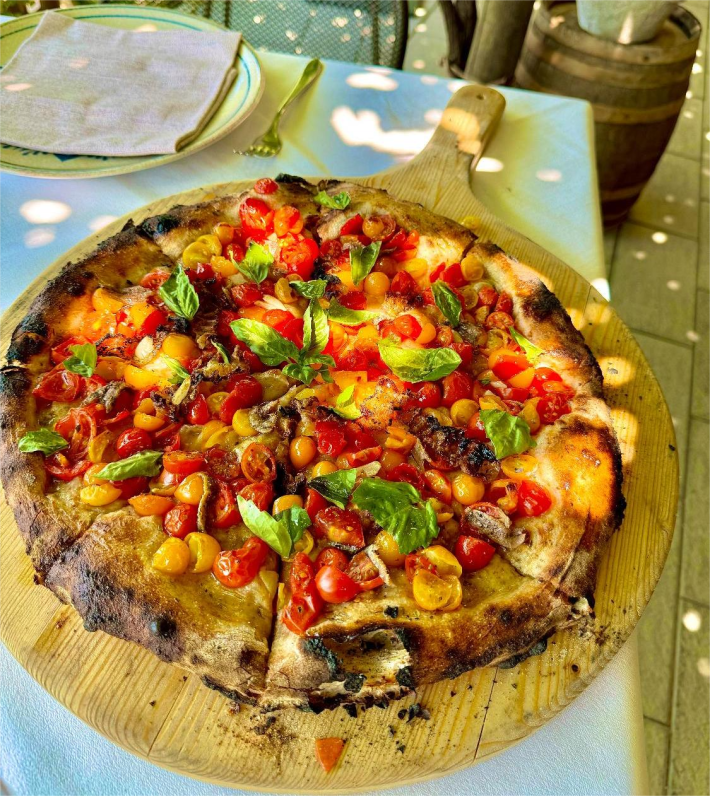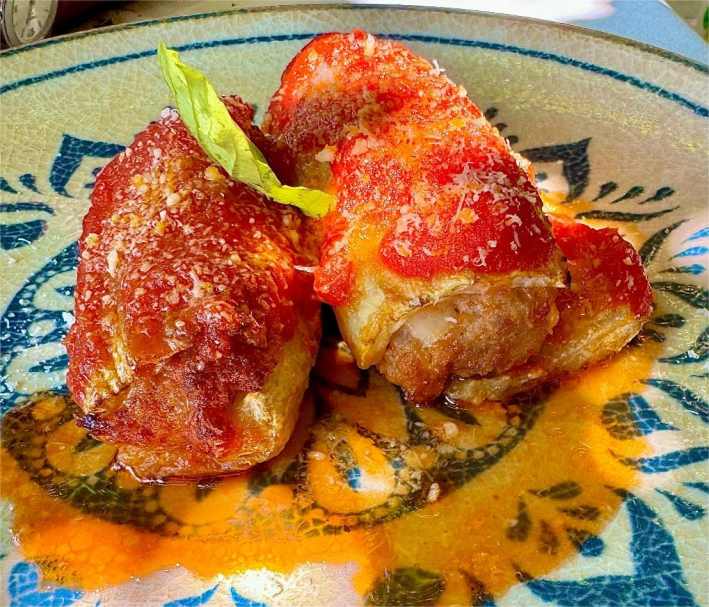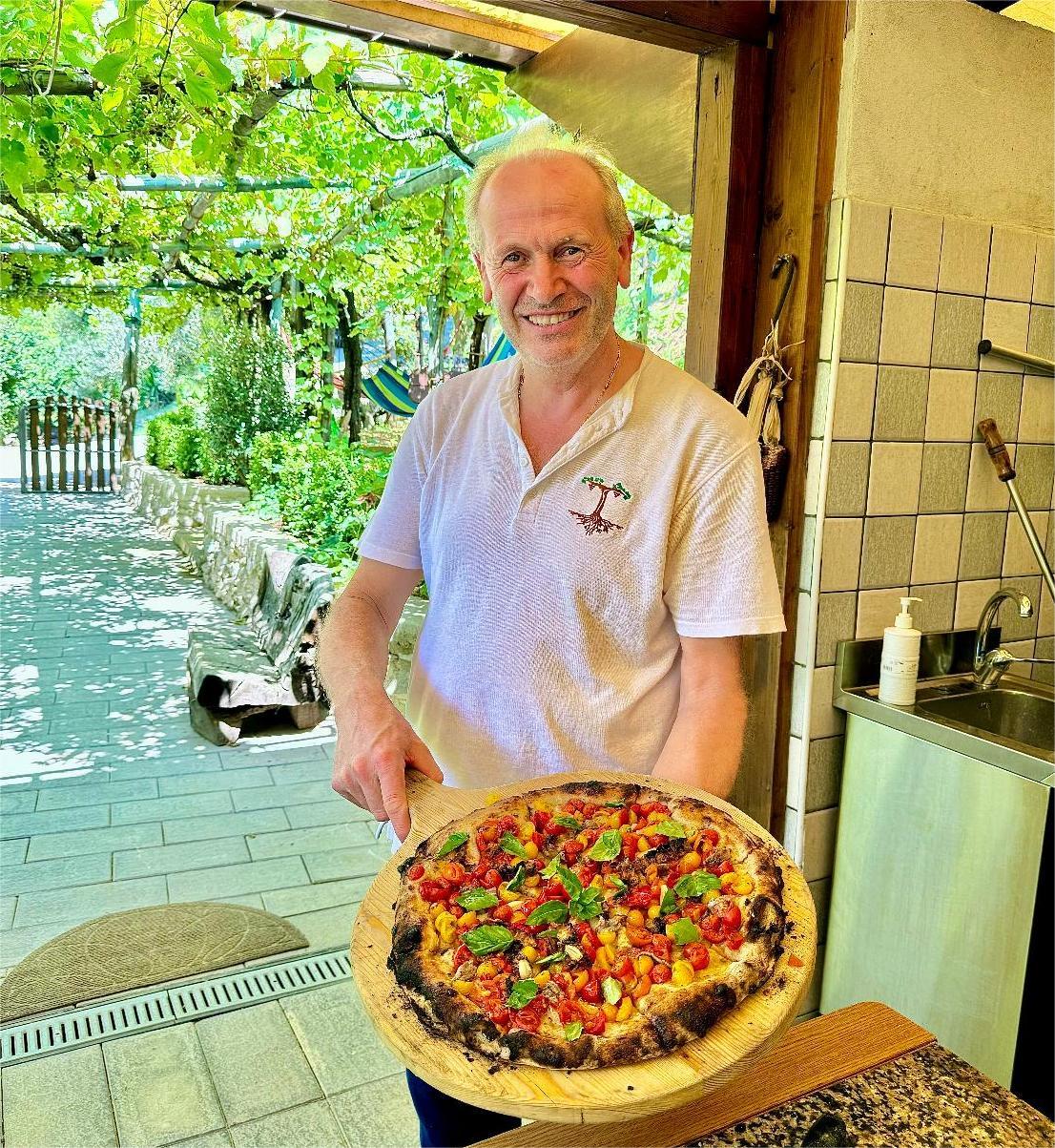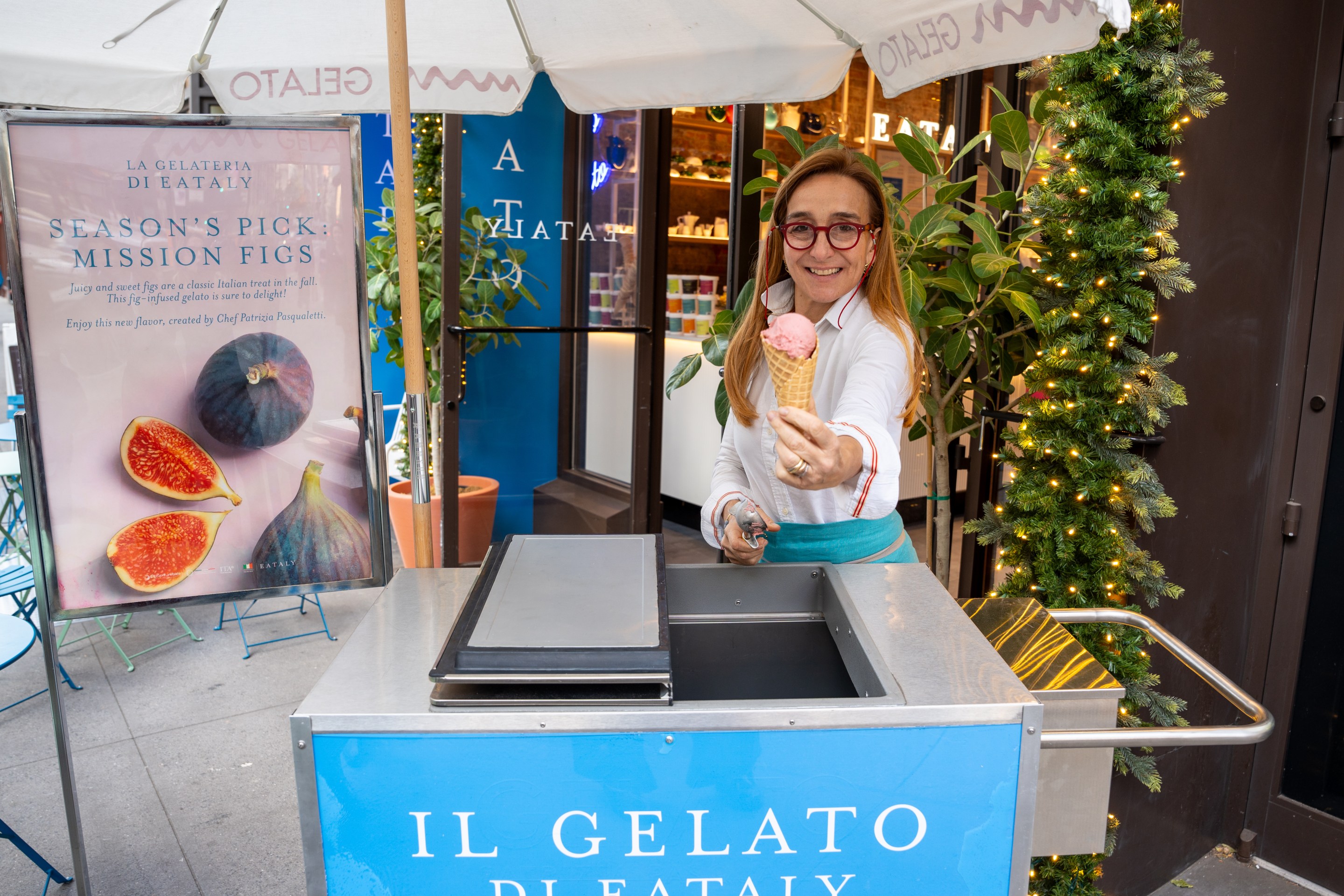When my father had the NYC restaurant Sistina, the food was exceptional, thanks to my cousins and uncle. In the late 1980s, they hired a chef named Giovanni Apicella, from a mountainous village on the Amalfi Coast called Tramonti. Giovanni had thick white hair, a gentle demeanor, and made amazing food. He was all about work and, in fact, my mother went to buy him clothes at Woolworth's minutes after his arrival so he could jump in the kitchen. I remember him mentioning the treasured pizza of his home village. Mr. Apicella left Sistina to open numerous restaurants on his own. Sadly, he passed a while back, but I never forgot him or that pizza.
My friend, Giovanni Ruocco, owns a lemon grove in Minori on the Amalfi Coast, to which I also dedicated an article here in Appetito. I asked him where to eat this Pizza di Tramonti. He put me in contact with the family-owned and operated Azienda Agricola Tintore, an agriturismo and B&B. I had no idea the blessings that were to be bestowed upon me.

I was picked up by one of the family's children, Claudio Caso. Just before we approached Tintore, he took me to the town's cemetery. It was stunningly beautiful, and he told me that every cemetery on the Amalfi Coast must, by law, have a view of the Sea. How respectful!
As we pulled up to Tintore, I felt a tranquility wash over me. Did I die and this is what heaven feels like? The people I was about to meet seemed like angels. I was greeted by husband and wife, Aniello Caso and Raffaella Amato, and their other two children, Federica and Roberta. The way these people transmitted their energies was real and beautiful. Aniello has a constant, gentle smile that relaxed me.
Everything is grown there, from animals to produce. We went to pick the ingredients for lunch and selected tomatoes for our pizza, an assortment of Datterino Giallo, Datterino Rosso, and Corbarino.
Returning from the fields to the forno, I met Vincenzo Savino, the head of the Associazione Pizza Tramonti. We talked for hours, and he loved that I knew about Re Fiascone, a progenitor of San Marzano and one of many rare and historic tomato varieties, and he smiled when I showed him all of them in my book "Mà, What Are you Cooking?" What happened next blew me away: I discovered all of my new friends were also friends with Giovanni Apicella!

Raffaella is the warm embrace and heart of it all. I felt her precious energy via text, before we ever spoke. She discussed Tintore and how they make wine, too. Much of the Piedirosso grapes and grape vines that go to making Gragnano and Lettere's sparkling red wines - which I discuss in my book "Wine Made Easy" - come from Tramonti, historically and to this day, taking the Monte Cerreto trail up and over the mountain, which is one of the highest of Monti Lattari. At my wine store in New York City, In Vino Veritas, we were among the first to carry Gragnano outside the indigenous area, anywhere in the world, over 20 years ago. They also grow grapes like Biancazita and Tintore.
At the oven, Aniello started to make the Pizza Tramontana from a dough of wild fennel and whole wheat, along with sunflower seeds and corn. Historically, other grains were also mixed, such as rye, millet, and barley.He made one of the traditional toppings of lardo (cured back fat), anchovies, and cherry tomatoes.
The pizza was a by-product of pane biscottato, a rusk. This biscuit bread lasts long and is often dunked in water, under the faucet, or in a sponzapane. The people of Tramonti would trade this bread, along with their lardo, with the monks of Cetara, who would give them anchovies and colatura. Once in the hands of the fisherman at sea, they would dunk the bread in the Mediterranean for a boat lunch!

The Pizza di Tramonti was made to test out the oven, a practice similar to the Ammaccata Pizza of the Cilento. Given the flame was not ready for the pizzas, mozzarella was not added to not dry it out; cheese was scarce, even though much of the milk for the famous cheese of Agerola comes from here. The breed Agerolese keeps Agerola’s name.
Pizza di Tramonti is dark-colored and flavored; it's even called black pizza and was traditionally served on the day of the dead. The resulting dough from mixed grains is quite coarse, hard to work, and can’t be made in large quantities; a pizzeria making a few hundred pizzas a night cannot be bothered. It’s a special occasion/special order pizza and takes a few days for the dough to rise before being stretched. Aniello stretches and slides it off the counter, the same way my aunts do. The pizza was hefty but digested very easily. It was outstanding.
Perhaps it's not so rare, but about 3,000 pizzerias worldwide continue this tradition, thanks to the people of Tramonti and Vincenzo Savino!

I had to special request Sarchiapone, zucchine stuffed with meat. It has mixed origins, like Struncatura, between both the coast and Calabria. It’s a specialty of Atrani, one of the smallest towns of the coast, just next to Amalfi, quickly accessible by foot, and is made for the Feast of Santa Maria Maddalena on the 22nd of July. I had just missed it by two weeks, so Raffaella made it. It was one of the most elegant things I’ve ever eaten, and I refuse to call it stuffed zucchine: this was something else. When I asked what she put in it, she said “just meat.” Either it’s a secret and/or the quality of the ingredients was too heavenly to replicate elsewhere. It was luxurious.
For dessert, we had Crostata al Limone. To finish, homemade Limoncello, coffee, and, of course, Concerto, an after dinner liqueur, which is a mix of herbs, spices, orzo, and coffee. It gets mixed in with coffee, too.
My day at Tintore was an experience I will never ever forget and desperately needed. I felt part of the family. The love comes through in the food. Tramonti is known as the Green Lung of the Amalfi Coast, sitting high atop it all, between Maiori and Minori. The feeling there reinvigorates, and spending time at Tintore, with those people, makes you feel and know that all is right with the world.
Author's Note: Here's a video version of my experience:







